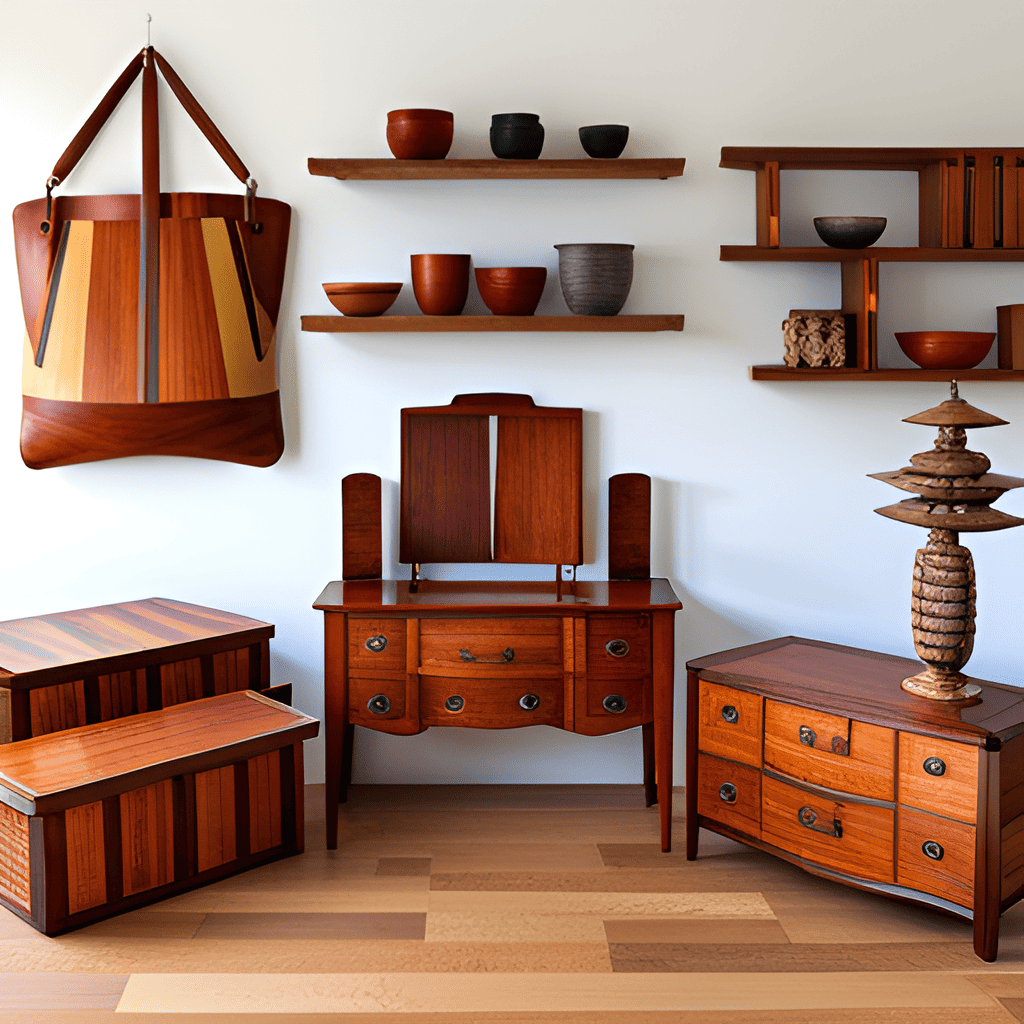Angelim Pedra is a dense and durable hardwood native to South America, known for its exceptional strength and resistance to decay and insects. With a straight to interlocked grain pattern and attractive color ranging from light yellow-brown to reddish-brown, it is commonly used for outdoor applications like decking, marine construction, and outdoor furniture due to its resilience and longevity.
Angelim Pedra Is A Durable Wood For Indoor And Outdoor Use
Angelim Pedra wood is highly valued for its exceptional strength, durability, and resistance to decay and insects. Due to these properties, Angelim Pedra wood is commonly used for various outdoor and heavy-duty applications, including:
- Decking and Flooring: Angelim Pedra’s durability and resistance to weather make it an ideal choice for decking and flooring in outdoor spaces.
- Marine Construction: The wood’s natural resistance to water and decay makes it suitable for marine construction, including piers, docks, and seawalls.
- Bridge Construction: Angelim Pedra is utilized in building bridges and pedestrian walkways due to its strength and ability to withstand heavy loads.
- Pergolas and Gazebos: The wood’s attractive appearance and resistance to weather make it popular for pergolas, gazebos, and other outdoor structures.
- Fencing and Landscaping: Angelim Pedra is used for fencing and landscaping applications, where its durability and resistance to pests and decay are advantageous.
- Railroad Ties: The wood’s toughness and ability to resist wear make it a suitable material for railroad ties and sleepers.
- Industrial Applications: Angelim Pedra is employed in various heavy industrial applications, such as construction supports and industrial flooring.
- Civil Engineering: The wood is used in civil engineering projects, including retaining walls and sound barriers.
- Outdoor Furniture: Angelim Pedra is a favored choice for outdoor furniture due to its resilience and natural resistance to weather.
- Utility Poles: The wood’s strength and durability make it suitable for utility poles and electrical infrastructure.
Overall, Angelim Pedra’s strength, durability, and natural resistance to environmental factors make it a reliable and long-lasting choice for various outdoor and heavy construction applications.
Angelim Pedra Wood Is Known For The Following Characteristics
Angelim Pedra is an interesting tree with a number of unique features. Here’s a table with 15 interesting and important characteristics of Angelim Pedra trees and the wood produced:
| Aspect | Description |
|---|---|
| Tree Name | Angelim Pedra (Dinizia excelsa) |
| Tree Height | Can reach heights of up to 30-45 meters (98-148 feet) |
| Trunk Diameter | Large trunk diameter, up to 1.5 meters (5 feet) |
| Growth Environment | Native to tropical rainforests in South America |
| Wood Color | Varies from light yellow-brown to reddish-brown |
| Wood Grain | Straight to interlocked grain pattern |
| Density | Very dense hardwood with a density of about 880-990 kg/m³ (55-62 lbs/ft³) |
| Durability | Highly durable and resistant to decay, insects, and fungi |
| Workability | Generally easy to work with, despite high density |
| Stability | Exhibits good stability with low movement |
| Finishing Qualities | Takes stains and finishes well |
| Sustainability | Sustainably managed in some regions of its native habitat |
| Odor | Angelim Pedra has a mild and pleasant scent |
| Toxicity | Generally non-toxic, but potential skin irritation |
| Common Uses | Decking, flooring, marine construction, outdoor furniture, utility poles, etc. |
Substitutes For Angelim Pedra Wood
While Angelim Pedra wood possesses unique characteristics, several other hardwood species can serve as substitutes for specific applications, offering similar qualities and performance. Some common substitutes for Angelim Pedra wood include:
- Greenheart (Chlorocardium rodiei): Greenheart wood shares similar strength, durability, and natural resistance to decay, making it a suitable alternative for marine construction and outdoor applications.
- Ipe (Tabebuia spp.): Ipe wood exhibits exceptional strength and resistance to weather, making it a viable substitute for decking, outdoor furniture, and marine projects.
- Massaranduba (Manilkara huberi): Massaranduba wood is known for its density and durability, making it suitable for outdoor structures, decking, and heavy construction.
- Cumaru (Dipteryx odorata): Cumaru wood possesses high strength and resistance to decay, making it suitable for outdoor projects and decking.
- Tatajuba (Bagassa guianensis): Tatajuba wood offers good strength and resistance to decay, making it a potential substitute for outdoor applications.
- Purpleheart (Peltogyne spp.): Purpleheart wood is prized for its strength and striking purple color, making it suitable for decorative and structural projects.
- Red Balau (Shorea spp.): Red Balau wood shares similar durability and weather resistance, making it an option for outdoor applications and decking.
- Bangkirai (Shorea laevis): Bangkirai wood is known for its strength and resistance to decay, making it suitable for outdoor construction projects.
Final Thoughts
Angelim Pedra (Dinizia excelsa) is a highly valued hardwood native to South America. Its impressive durability, density, and resistance to decay and insects make it suitable for a wide range of applications, including decking, flooring, marine construction, outdoor furniture, and utility poles. The wood’s stability and workability make it a popular choice for both indoor and outdoor projects.
When considering a substitute for Angelim Pedra wood, it is essential to evaluate the specific project requirements, the desired properties, and the availability of alternative wood species in your region. Each substitute offers distinct characteristics, so consulting with wood experts or suppliers can help identify the most suitable alternative for your particular application.

